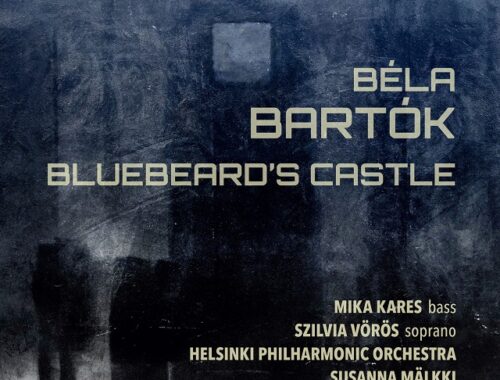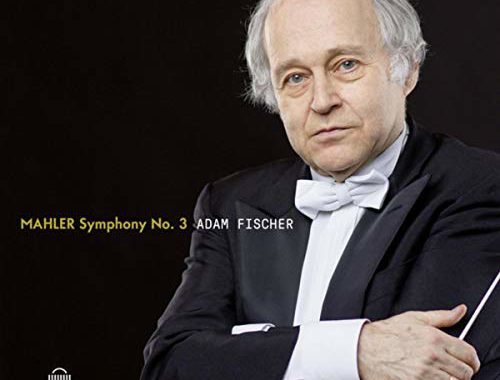GRAMOPHONE Review: Shostakovich Symphonies Nos. 6 & 7, Etc. – Boston Symphony Orchestra/Nelsons
 We’ve come to expect a clear-sighted brilliance and technical excellence from this series. It’s become something of a benchmark in that respect. The Tenth Symphony arrived like a whirlwind to kick things off and there have been many surprises and a few revelations along the way. But I do wonder, the more I hear of this cycle, if the pristine quality that Nelsons and his Boston orchestra bring to these pieces is inclined to render them a little too well-scrubbed. This is music of unvarnished power and directness – any hint of what might call a surface sheen can so easily come between us and the music’s plain-speaking.
We’ve come to expect a clear-sighted brilliance and technical excellence from this series. It’s become something of a benchmark in that respect. The Tenth Symphony arrived like a whirlwind to kick things off and there have been many surprises and a few revelations along the way. But I do wonder, the more I hear of this cycle, if the pristine quality that Nelsons and his Boston orchestra bring to these pieces is inclined to render them a little too well-scrubbed. This is music of unvarnished power and directness – any hint of what might call a surface sheen can so easily come between us and the music’s plain-speaking.
I don’t want to make too much of this because there is always plenty to relish in Nelsons’ approach – but it becomes very apparent in the second and third movements of the ‘top heavy’ Sixth Symphony that the cynicism and irony of what is after all one of the great deceptions in 20th Century music is compromised by the slickness, the ‘cleanness’, of Nelsons’ performance. Put simply, it needs to be dirtier.
That long first movement completely wrong-footed the powers-that-be in Stalin’s Soviet Union. It promised ‘seriousness’ (the rumour was that Shostakovich was working on his long-promised Lenin Symphony) and then wilfully (or so it was perceived) failed to deliver it, favouring practical jokes and rude punchlines over ‘Soviet Realism’. Nelsons sets up this shock tactic so well with a super-expansive Largo. He understands the stasis, the numbing stillness, of its frozen wastes so well and makes real capital of what might be heard as a glimmer of hope when solo horn leads a telling modulation towards the close. Boston trumpets aside (I love that they preserve that ‘blast from the past’ in the era of Munch and Leinsdorf), what follows must sound coarser and more blisteringly irreverent if the symphony as a whole is to deliver in full.
Smart programming juxtaposes Shostakovich’s Fool, as it were, with his King Lear. Like his cinematic Hamlet this incidental music, operatic in tone – Cordelia is depicted in a decidedly bel canto clarinet tune – alternates between cues of rudimentary melodrama (the blinding of Gloucester) and a series of somewhat ‘dutiful’ entrance fanfares. Speaking of fanfares, Nelsons’ own joke, if you like, is to conclude this first disc with the composer’s ubiquitous Festive Overture. But if you are going to do it there’s no point in sparing its vulgarity. For my money the tempo needs to be blistering and the tone raucous. It isn’t. Methinks Nelsons tries too hard to make music of it.
And so to the main event – the ‘Leningrad’. Magnificently played and engineered though it is, the same misgivings apply. The first movement’s toe-tapping Stalin tune undergoes exemplary transformations in that Bolero-like crescendo but it is progressed in such a ‘calculated’ way as to rob it of its threat. The monstrous modulation in the final throes of the crescendo (where all the extra brass weigh in) is neither as shocking nor as brutal as it needs to be. It’s the difference between powerful and overwhelming.
The inner moments – among the most original the composer ever penned – are especially mindful of their Mahlerian allusions and display all the finesse of Nelsons’ fine ear for detail. But I wonder if the starkness of the slow movement’s chorale (like a Stravinskian take on the Baroque) is not sacrificed to the beauty and blend of the playing? The passage just before the return is undeniably exquisite. And affecting.
As in the long slow haul to the finale’s coda with its message of resistance and defiance. The eventual return of the symphony’s opening theme in trombones turns on a thrilling tenuto in the trumpets and the final bars, of course, bring the house down. So much to applaud, then, but things that niggle, too, if you like your Shostakovich on the rare side.
You May Also Like

GRAMOPHONE Review: Bartók Duke Bluebeard’s Castle – Helsinki Philharmonic Orchestra/Mälkki
18/06/2021
Let the Sunshine In
15/04/2010

